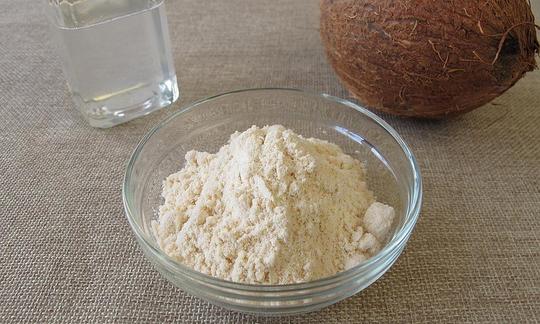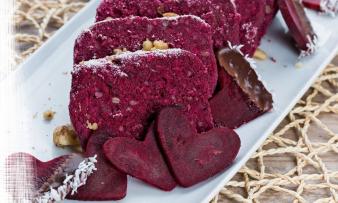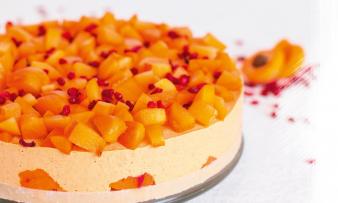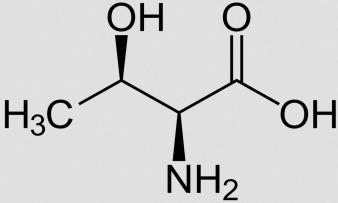Table of contents
Coconut flour (organic?) consists of ground and dried flesh of coconuts ( Cocos nucifera).
Use in the kitchen
Coconut flour is made from the pomace (pressed coconut meat) that is left over from the production of coconut milk, coconut cream or coconut oil. Due to the extraction of the oil, the flour contains less fat than coconut chips or coconut flakes.
Coconut flour is a gluten-free alternative to wheat flour and is used in the preparation of desserts and baked goods. Compared to other flours, it has a relatively high fiber content and tastes slightly sweet and nutty. If you use only coconut flour, you only need about a third of the amount of coconut flour specified in the recipe. However, you need a little more liquid than with other flours, as coconut flour binds a lot of liquid. Due to its ability to absorb water, coconut flour can be used as a binding agent for sauces, creams, stews and soups.
Coconut flour is not the same as coconut powder. The latter is dehydrated coconut milk that has been ground into a fine powder. It contains much more fat than coconut flour and is used in shakes or to make coconut milk or coconut cream by mixing it with water.
Can you eat coconut flour raw? Coconut flour can be consumed without prior heating and added to yogurt, smoothies or muesli, for example, to increase their protein content. Conventionally produced flour is usually not raw food quality, so strictly speaking it is not "raw". You can also sometimes find coconut flour in raw food quality.
Making your own coconut flour
Boil four parts water and add one part coconut flakes or coconut flesh and leave to swell for about 20 minutes. Then mix everything for about 2 minutes. Press the mixture through a sieve or a strainer. Collect the liquid (coconut milk) so that you can use it as a drink or for cooking. Put the pulp on a baking tray lined with baking paper and leave to dry in the oven at 60 °C with the door slightly open for at least 2-3 hours. Grind the dried pulp in a food processor or mill until it is as fine as you want. The coconut flour will keep for about 4 weeks in a preserving jar if stored in a dark, cool place.
Vegan recipe for no-bake banana coconut cookies
Ingredients (for 4 people): 1 very ripe banana, 1 tbsp lemon juice, 100 g oat flakes, 50 g coconut flour, 1 tbsp agave syrup, a little oat milk if necessary.
Preparation: Peel the bananas and mash them with a fork together with the lemon juice. Mix in the oat flakes, coconut flour and agave syrup and knead until a firm dough is formed. If the dough is too dry, add a little oat milk. Form the dough into balls and press flat on a flat plate. Place the cookies in the fridge for 2 hours before eating. The cookies will keep in the fridge in a sealed container for up to 3 days.
Vegan recipe for banana coconut cookies
Ingredients (for 4 people): 2 very ripe bananas, 1 tbsp lemon juice, 170 g coconut flour, 60 g desiccated coconut, 200 ml oat milk, 1 tsp baking powder, 1 pinch of salt.
Preparation: Peel the bananas and mash them with a fork together with the lemon juice. Mix the banana puree with the remaining ingredients. Leave the mixture to rest for about 15 minutes. With moistened hands, form 2 cm balls and place them on a baking tray lined with baking paper, pressing them down lightly. Preheat the oven to 180° Celsius and bake the cookies with top and bottom heat for 10 minutes. Remove and allow to cool.
Vegan recipes with coconut flour can be found under the note: " Recipes that have the most of this ingredient ".
| Not only vegans or vegetarians should read this: Vegans often eat unhealthily. Avoidable nutritional errors. |
Purchasing - Storage
Major retailers such as Coop, Migros, Edeka, Hofer, Billa, Rewe and Spar sell coconut flour, sometimes even in organic quality. Denner, Volg, Aldi and Lidl occasionally have it on special offer. Organic supermarkets such as Denn's Biomarkt and Alnatura also usually sell coconut flour. Coconut flour can also be ordered from online shops.
You can sometimes find raw quality coconut flour on the market. The term "raw" is not protected by law - unlike organic, so producers do not always take the temperature restrictions (e.g. 42 °C for "real" raw) seriously.
The availability of coconut flour varies depending on the size of the store, catchment area, etc. If you are interested, click on our recorded food prices for the DA-CH countries (above under the ingredient image). There you will find current prices from various supermarkets and their price development.
Storage tips
Coconut flour should be stored in an airtight container, dry and protected from heat and light. Unopened, it will last for up to a year.
Ingredients - Nutritional values - Calories
How many calories does coconut flour have? Coconut flour (organic) contains 290 kcal per 100 g. The fat content is 14 g/100g, which corresponds to 20.0% of the daily intake. Coconut flour contains 55 g/100g carbohydrates, of which 18 g are sugar. It is very rich in fiber (35 g/100g). Protein is also plentiful at 21 g/100g. 1
Coconut flour is rich in manganese. The 2.1 mg/100 g corresponds to 105% of the daily requirement. Coconut chips have the same content (2.1 mg/100 g) and desiccated coconut a slightly higher content (2.7 mg/100 g). However, both have higher fat contents (69 g and 65 g/100 g respectively), so they should not be consumed in large quantities. Quinoa and amaranth contain a comparable amount of manganese (2.0 mg and 2.3 mg/100 respectively), but have much less fat. 1,7 They also contain larger amounts of copper, potassium , phosphorus, iron and magnesium. 1
The protein-rich coconut flour contains large amounts of the two essential amino acids threonine and lysine. The threonine content is 0.70 g/100 g, which corresponds to 75.0% of the daily requirement. Lysine is included at 0.91 g/100g. This covers 49.0% of the daily requirement. 1 Lupine flour has even higher contents. This has 1.4 g threonine and 2.0 g lysine per 100 g. 7 Coconut flour also contains large amounts of the amino acids valine and tryptophan. 1
The complete ingredients of coconut flour, the coverage of the daily requirement and comparison values with other ingredients can be found in our nutrient tables. In the article Nutrients explained you will get a detailed insight into the topic.
Effects on health
Is coconut flour healthy? For years, coconuts and coconut products such as coconut flour have been promoted as 'superfoods'. However, this is purely an industry interest in increasing sales. Vegans in particular use coconut milk as a milk or cream substitute, the oil for cooking and baking or for the skin, etc. According to interested circles, coconut blossom sugar is also said to have many advantages over conventional beet sugar.
The coconut boom is a big mistake, however, because the composition of the fatty acids in the oil is particularly unhealthy: Coconut oil consists of around 82% saturated fatty acids. At around 50%, even palm oil is healthier! Unsaturated fatty acids are also present, but the ratio of omega-6 to omega-3 fatty acids is significantly higher than the recommended maximum of 5:1 ( linoleic acid, LA, to alpha-linolenic acid, ALA).
When coconut products are consumed, the undesirable LDL cholesterol in the blood increases, which promotes cardiovascular disease. However, the healthy HDL increases slightly more, which then improves the total/HDL serum cholesterol ratio. Measured only by this ratio, coconut seems particularly healthy, which is a fallacy. In general, saturated fatty acids have a detrimental effect on blood values and cholesterol levels. A 2016 study analyzed 21 research papers, including 8 clinical studies and 13 observational studies, and concluded that replacing coconut oil with a healthier oil reduces the risk of cardiovascular disease. 11 We recommend using canola oil as a substitute or replacing oil consumption with nuts and seeds if possible.
For more information on health aspects, see the link to coconut oil (coconut oil, coconut fat).
Dangers - Intolerances - Side effects
Coconut flour contains a lot of protein and sugar. During baking, the amino acids (components of proteins) react with the sugar, which leads to browning and the formation of new compounds (so-called melanoidins). This non-enzymatic browning reaction is called the Maillard reaction. The new compounds are responsible for the intensification of the taste. However, several potentially mutagenic and carcinogenic compounds can also be formed, such as acrylamide. 9,10
A coconut allergy is rare. However, as consumption becomes more widespread, more and more cases of allergic reactions are being reported. This particularly affects children who are given coconut milk as a cow's milk substitute or who use coconut oil as a body lotion. It has been found that a cross allergy with walnuts, sesame, macadamia nuts, almonds and cashews can occur. 12,13
Ecological footprint - animal welfare
The ecological CO 2 footprint of coconut flour depends on various factors, including the way the coconuts are grown, processing, transport and packaging. Despite extensive research, we were unable to find any precise figures for the ecological footprint of coconut flour. According to the Big Climate Database, this is 3.5 kg CO 2 eq/kg for coconut milk 14 and 2.3 kg CO 2 eq/kg for coconut oil. 15 Since coconut flour is the "waste product" in the production of coconut milk and oil, the amount of emissions produced is probably also within this range.
Due to their numerous useful properties and clever marketing, coconuts are in demand almost worldwide - as food, but also for generating energy or for making decorations, furniture or medicine. In the tropical growing countries, this creates important jobs; in the Philippines, for example, up to 3.5 million people are directly or indirectly dependent on the coconut industry. 16 However, the coconut industry should be viewed with extreme skepticism, because small farmers often manage the coconut plantations for the western market, but the price is dictated by large trading companies. The farmers can barely live on this pay. When day laborers manage company-owned plantations, the conditions there are usually inhumane. 4 Certified goods have been available for years, but have rarely been in demand. 6 It should also be remembered that coconuts have had to travel long distances for our consumption and are therefore associated with high emissions.
The area required to grow coconut palms is often associated with land theft, deforestation and the destruction of local biodiversity. In order to meet the high demand, mixed crops are rarely planted, but monocultures are preferred. Coconut oil is also increasingly replacing the controversial palm oil. However, the yield of oil palms, with an average of around 3.8 tons of oil per hectare, is far higher than that of coconut oil, with 0.7 tons of oil per hectare. 4 If you look at the number of endangered species per million tons of oil produced, coconut oil performs even worse than palm oil. 17
A study by the University of Exeter shows that an average of 60 species on the IUCN Red List are threatened as a result. 6 Since trained monkeys are sometimes used to harvest coconuts, consumption also leads to a lot of animal suffering. The monkeys are trained violently for several years until they are able to pick coconuts from the tall palm trees, which they have to do while tied up until they die. 5
Worldwide occurrence - cultivation
Coconut flour is made from the flesh of coconuts. Coconut palms grow mainly in the equatorial zone, i.e. in tropical areas. People have been using the coconut palm for at least 3000 years. It probably originated in Polynesia (Pacific island region). From the 19th century onwards, coconuts gained economic importance when they were grown on plantations by the Dutch in Ceylon. 3
According to FAOSTAT, around 63.6 million tons of coconuts were produced worldwide in 2021. The main growing areas are Indonesia (17.1 million tons), Philippines (14.7 million tons), India (14.3 million tons), Sri Lanka (2.4 million tons). 2
For information on growing and harvesting coconuts, see Coconut meat, raw.
Industrial production
For the commercial production of coconut flour, the pressed pulp (pomace) is used, which is a "waste product" during the production of coconut oil and coconut milk. First, the pomace is sterilized using steam or boiling water. It is then dried at 75-85° C and pressed again to minimize the oil content. This is important to increase the shelf life of the coconut flour. The deoiled coconut flakes are dried again and then ground into a fine flour. In the past, coconut flour was also made from desiccated coconut. However, this has a negative effect on the color of the flour. In addition, coconut flakes themselves are a popular product, which is why they are no longer used as a raw material for coconut flour. 8
Further information
The coconut palm ( Cocos nucifera), also called coconut palm, is the only species of this genus and belongs to the palm family (Arecaceae). The coconut is not a nut, but is a single-seeded drupe. It consists of three carpels that grow together, which is why it is often slightly triangular in shape. The three eyes that you see on one side are the three germ holes, whereby only one germ begins to grow at a time.
Alternative names
Sometimes you will also find the spelling coconut flour or coconut meal. In English, the fruit, tree or seed are called coconut or cocoanut. When referring to the palm tree, we speak of the coconut tree. In English, coconut flour is called coconut flour.
Bibliography - 17 Sources (Link to the evidence)
| 1. | ÖNWT Die Österreichische Nährwerttabelle. Kokosmehl. |
| 2. | FAOSTAT Food and Agriculture Organization of the United Nations. Production Quantity. Coconuts, in shell (2021). |
| 3. | Brücher H. Tropische Nutzpflanzen. Ursprung, Evolution und Domestikation. Springer: Berlin, Heidelberg, New York; 1977. |
| 4. | WWF-Report Speiseeis: Like Ice in the Sunshine. Kokosfett aus den Tropen - "heimischer" Raps aus Übersee. |
| 5. | PETA Missbrauch von Affen für Kokosmilch und Co. - helfen Sie jetzt! |
| 6. | Meijaard E, Abrams JF, Juffe-Bignoli D, Voigt M, Sheil D. Coconut oil, conservation and the conscientious consumer. Current Biology. 6. Juli 2020;30(13):R757–8. |
| 7. | USDA United States Department of Agriculture. |
| 8. | Bayalan DD. The economics of production, utilization and marketing of coconut flour from milk residue. CORD 2000 Dec;16(1):1-13. |
| 9. | Sujirtha N, Mahendran T. Use of Defatted Coconut Flour as a Source of Protein and Dietary Fibre in Wheat Biscuits. IJIRSET 2015 Aug;4(8):7344-7352. |
| 10. | ALjahdali N, Carbonero F. Impact of Maillard reaction products on nutrition and health: Current knowledge and need to understand their fate in the human digestive system. Crit Rev Food Sci Nutr. 2019;59(3):474-487. |
| 11. | Eyres L, Eyres MF, Chisholm A, Brown RC. Coconut oil consumption and cardiovascular risk factors in humans. Nutr Rev. 2016 April;74(4):267–80. |
| 12. | Kruse L, Lor J, Yousif R, Pongracic JA, Fishbein AB. Coconut allergy: Characteristics of reactions and diagnostic predictors in a pediatric tertiary care center. Ann Allergy Asthma Immunol. 2021 May;126(5):562-568.e1. |
| 13. | Wongnate J, Piboonpocanun S, Kanchanapoomi K, Srisuwatchari W, Jirapongsananuruk O, Visitsunthorn N, Pacharn P. Clinical features of children with coconut allergy and its sIgE profiling using immunoblot analysis. Pediatr Allergy Immunol. 2022 Nov;33(11):e13874. |
| 14. | CONCITO. The Big Climate Database, version 1. 2021. |
| 15. | Reinhardt G, Gärtner S, Wagner T. Ökologische Fussabdrücke von Lebensmitteln und Gerichten in Deutschland. Institut für Energie - und Umweltforschung Heidelberg. 2020. |
| 16. | Gurbuz IB, Manaros M. Impact of coconut production on the environment and the problems faced by coconut producers in Lanao del Norte Province, Philippines. Scientific Papers Series Management, Economic Engineering in Agriculture and Rural Development Vol. 19. 2019. |
| 17. | Meijaard E, Abrams JF, Juffe-Bignoli D, Voigt M, Sheil D. Coconut oil, conservation and the conscentious consumer. Current Biology Magazine. 2020. |











Comments